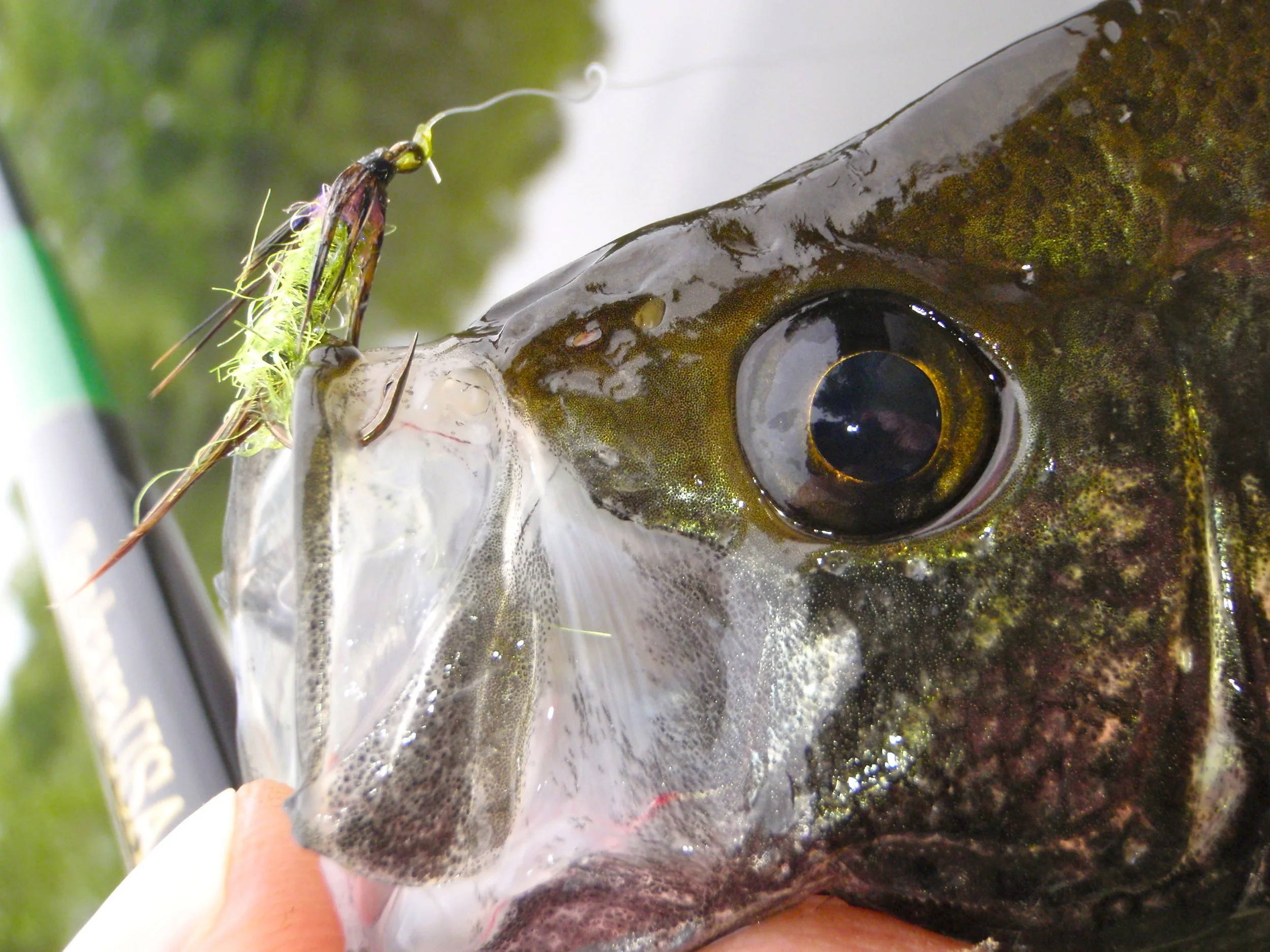Crappie

Habitat
Crappies are found throughout the lower 48 of United Staes due to aggressive stocking practices. They have also been stocked in areas of Mexico and Panama. Their original range was believed to be the eastern and central portions of the country. They are found in lakes both natural and man-made, ponds and large rivers. In moving water, they prefer to occupy areas with little to no current.

Description
Crappies are members of the sunfish family with two recognized species the white and the black crappie. For this article, I will not differentiate between the two as they often occupy the same watersheds and share similar feeding habits with some minor differences. Black crappie can be distinguished from white crappie by their darker coloration and a pattern of black spots. The white crappie is more of a silver color with green or brown shades on its back and a series of fertile bars on its sides.
Like all of their panfish cousins, they go by a variety of names depending on where you are fishing for them. Some of the names include strawberry bass, calico bass, Oswego bass, speckled perch, specks, papermouths, and sac-a-lait.
Both species reach a maximum weight of about five pounds. The current white crappie record is 5lb 3oz, and the black crappie record comes in at 5lbs on the nose. Crappie can live up to fifteen years, though most will max out around seven.

Feeding Habits
Adult crappie feed predominantly on other fish which includes baitfish, young of the year panfish (including members of their own species and the juvenile versions of their predators which include bass, pike, musky and walleye. They do also feed on aquatic and terrestrial insects as well as crayfish when available especially during times when smaller fish may not be plentiful.
Crappie do the majority of their feeding at dawn and dusk when light levels are lower. They tend to be less active during the day. While not necessarily ambush predators, they orient themselves to cover such as weed beds, submerged natural and artificial debris, docks, fallen trees, large rocks, etc. They also tend to suspend in schools over open water at times.

Spawning
Crappie spawn in the spring when water temperatures reach 57 - 60 degrees. Peak spawning will take place in water temperatures between 68-72 degrees. They spawn in colder water than other members of the panfish family and are often the first panfish targeted by anglers after winter releases its grip on the lakes, ponds, and rivers where they live. Crappies utilize shallow water for spawning preferring water 3-6 feet in depth but may spawn in shallower water if the water is turbid or go much deeper (almost 20 feet) in clear water. They make their nests near cover in areas with emergent vegetation such as reed beds or areas of flooded timber with firm bottoms(marl, gravel or silt). They tend to avoid established weed beds as it makes defending their nests against raiders more difficult. Unlike bluegills and other sunfish that repeatedly spawn through the warmer months the crappie spawning period only lasts a few weeks. Like bluegills, the male fish build the nests, defend them while the eggs hatch and stay on for a short period to protect the fry.

Effective Fly Patterns
For the fly rodder, small streamers are effective crappie catchers but don’t overlook insect imitations like damselfly and dragonfly nymphs as well as soft hackle and wet fly patterns which imitate a host of organisms. They will feed on the surface occasionally especially during low light periods such as dawn or dusk.